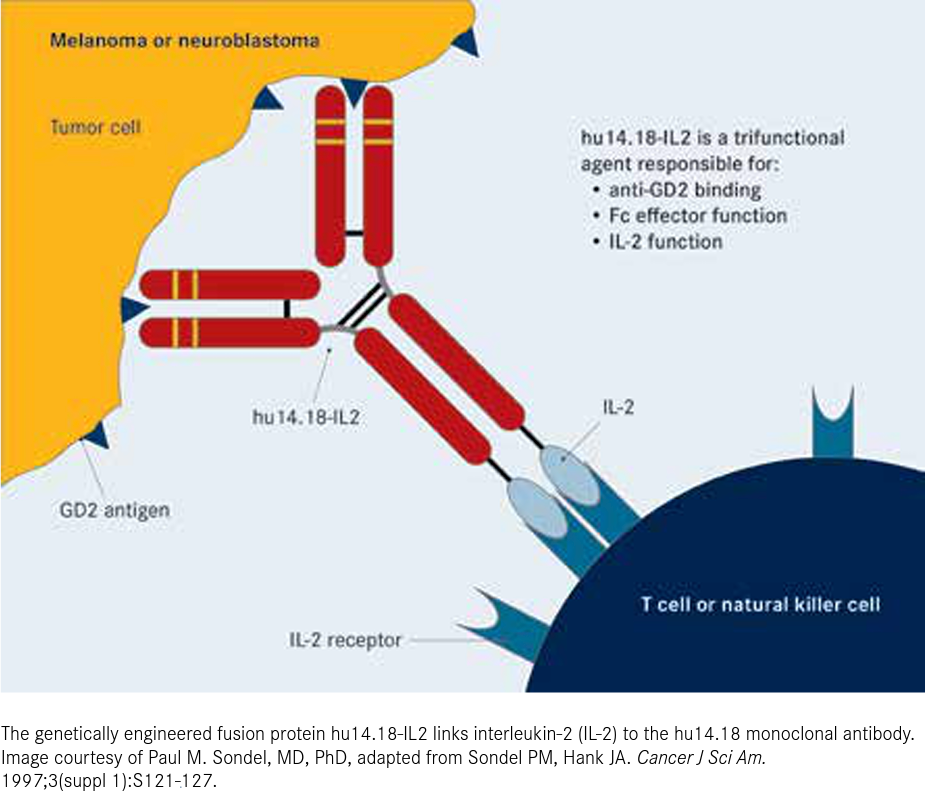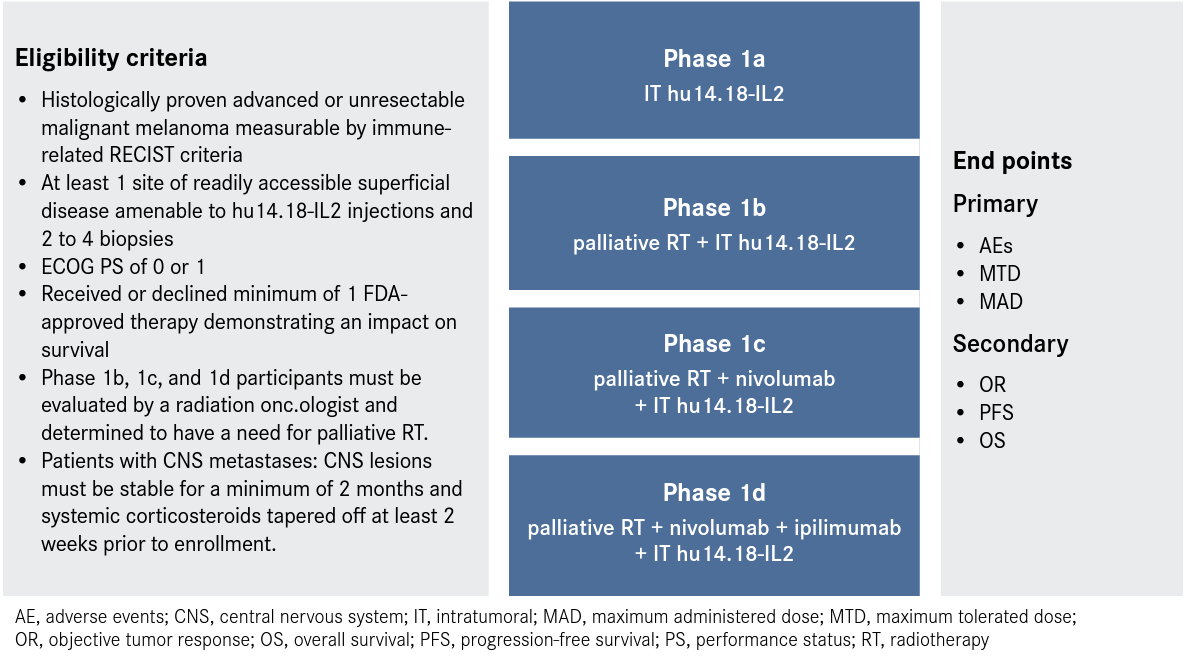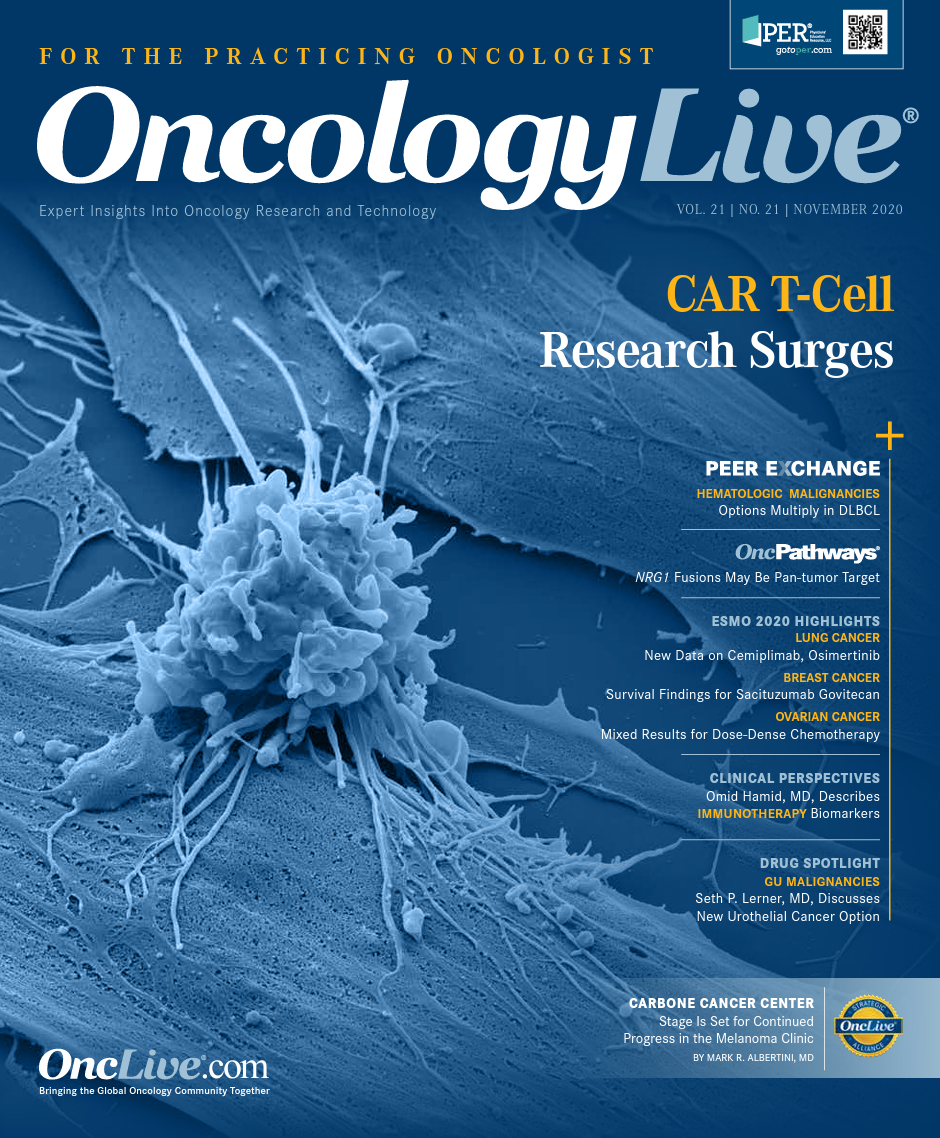Publication
Article
Stage Is Set for Continued Progress in the Melanoma Clinic
Author(s):
Unprecedented treatment advances have been made during the last decade for patients with advanced melanoma.
Mark R. Albertini, MD

Unprecedented treatment advances have been made during the last decade for patients with advanced melanoma.1 These strides are especially impressive when contrasted with the limited treatment options available for similar patients before 2011. At that time, standard-of-care treatment considerations for patients with advanced melanoma were limited to chemotherapeutic agents that achieved transient responses without a confirmed survival benefit in small proportions of treated patients.2 Additionally, cytokine-based therapy with high-dose bolus interleukin-2 (IL-2) was available, and data showed an overall response rate of 16% and a 6% complete response rate in patients with metastatic melanoma.2 However, high-dose IL-2 has severe toxicity and was limited to patients with excellent performance status at specialized treatment centers. The treatment prioritization for metastatic melanoma at most academic medical centers was participation in an appropriate clinical trial. Unfortunately, conferred benefit remained infrequent until the successful translation of several insights from the lab to the clinic that changed the standard of care for patients with metastatic melanoma.1
A Wave of Change
One translational insight that improved outcomes for many patients with advanced melanoma was the identification of different genetic aberrations and genetic driver mutations—most prominently BRAF mutations—and the subsequent development of targeted agents that interfere with these pathways. This stimulated the development of BRAF and MEK inhibitors that improved the care of patients with BRAF-mutant metastatic melanoma by targeting the mitogen-activated protein kinase (MAPK) pathway.3
A second translational insight was the understanding that T cells can specifically recognize melanoma.4 Although this suggested an exciting therapeutic opportunity, an understanding of negative and positive T-cell costimulatory molecules was required to unleash T cells against melanoma and achieve effective antitumor responses first in preclinical models and then the clinic.5 This proved to be a game-changing insight for patients with melanoma and provided the foundation for several clinical studies that evaluated antitumor activity and explored underlying biological mechanisms.
The initial immune checkpoint inhibitor that improved survival for patients with metastatic melanoma was ipilimumab (Yervoy), an anti–CTLA-4 antibody.6 Since then, monoclonal antibodies that block PD-1 such as pembrolizumab (Keytruda) and nivolumab (Opdivo) improved outcomes with less toxicity than ipilimumab in metastatic melanoma.7,8 In addition, sustained long-term overall survival was seen in a greater percentage of patients with metastatic melanoma who received concurrent ipilimumab and nivolumab or nivolumab monotherapy than in those who received ipilimumab alone.9 However, treatment with combined immune checkpoint blockade has the consequence of more frequent and more severe immune-related adverse events.10,11
Carbone Cancer Center Takes Action
The discovery of informative predictive biomarkers of response, as well as biomarkers of adverse events, is essential to guide patient care going forward. There is also tremendous enthusiasm to investigate combination treatments to enhance the anti-tumor activity that can be achieved with immune checkpoint blockade.1 Fortunately, we have a road map to guide us as we start our next journey.
A clinical trial (NCT03958383) at the University of Wisconsin Carbone Cancer Center in Madison is studying an intratumoral (IT) vaccine strategy with the GD2-reactive hu14.18-IL2 immunocytokine (IC) in patients with advanced (stage IV) or unresectable stage III melanoma who have disease progression after prior treatment with an FDA-approved therapy. The hu14.18-IL2 IC is a humanized monoclonal antibody (mAb) that is cova-lently linked to 2 molecules of IL-2 at the Fc region (Figure 1).12
FIGURE 1. Diagram of hu14.18-IL212

How we got here
The hu14.18 mAb recognizes GD2, a disialoganglioside that is a cell membrane molecule predominantly found in tumors of neuroectodermal origin including melanoma, neuroblastoma, and certain sarcomas. GD2 is relatively rare in normal tissues and mostly occurs in the cerebellum and peripheral nerves.12-14 Systemic administration of hu14.18-IL2 IC in patients with advanced melanoma was previously studied, with reported immune activation and reversible toxicities.15-16 Also reported was surgery to remove all identifiable melanoma either prior to or following the first of 3 courses of hu14.18-IL2 IC at 6 mg/m2 on days 1, 2, and 3 of each 28-day course. We saw prolonged tumor-free survival in some patients at high risk for recurrence and death. Molecular markers associated with outcome also were identified.17-18
In preclinical testing in mice, the antitumor effects of hu14.18-IL2 were enhanced by administering hu14.18-IL2 directly into established GD2-positive tumors.19 In addition, a cooperative interaction between IT-IC, local radiotherapy (RT), and an anti–CTLA-4 antibody was demonstrated.20 A recent report suggested that this interaction may be multifactorial and that tumor-specific regulatory T (Tregs) cells harbored in untreated tumors may pose a challenge to the efficacy of in situ vaccination. Consequently, this led to the identification of potential therapeutic approaches to deplete local Tregs to circumvent this problem.21
What lies ahead
At Carbone Cancer Center, a phase 1/2 clinical trial has been opened to study the IT administration of hu14.18-IL2 with local radiation, nivolumab, and ipilimumab in patients with advanced melanoma (Figure 2). The study will include comprehensive correlative immune monitoring to translate this laboratory insight into the clinic.
Figure 2. Phase 1/2 Trial of hu14.18-IL2 Estimated planned enrollment, N = 43-58

The therapeutic goal is to convert the injected tumor into an effective in situ tumor vaccine, as has been shown in mice. The trial consists of 4 phases to study IT delivery of hu14.18-IL2 alone (phase 1a), in combination with local RT (phase 1b), in combination with local RT and systemic nivolumab (phase 1c), and in combination with local RT, systemic ipilimumab, and systemic nivolumab (phase 1d) in patients with advanced melanoma. The trial, which will evaluate safety, antitumor activity, and immunologic end points, is designed to replicate the striking antitumor responses this regimen achieved in preclinical models. Phase 1a of the trial is open, which involves IT delivery of hu14.18-IL2 alone.
The identification of effective treatments with curative potential for metastatic melanoma patients is the final destination of this melanoma roadmap. It is predicted that transformative insights in the lab will continue to guide the progress still needed for patients with metastatic melanoma.
References
- Albertini MR. The age of enlightenment in melanoma immunotherapy. J Immunother Cancer. 2018;6:80. doi:10.1186/s40425-018-0397-8
- Boyle GM. Therapy for metastatic melanoma: an overview and update. Expert Rev Anticancer Ther. 2011;11(5):725-737. doi:10.1586/era.11.25
- Silva IP, Long GV. Systemic therapy in advanced melanoma: integrating targeted therapy and immunotherapy into clinical practice. Curr Opin Oncol. 2017; 29(6):484-492. doi:10.1097/CCO.0000000000000405
- van der Bruggen P, Traversari C, Chomez P, et al. A gene encoding an antigen recognized by cytolytic T lymphocytes on a human melanoma. Science. 1991;254(5038):1643-1647. doi:10.1126/science.1840703
- Sharma P, Allison JP. The future of immune checkpoint therapy. Science. 2015;348(6230):56-61. doi:10.1126/science.aaa8172
- Hodi FS, O’Day SJ, McDermott DF, et al. Improved survival with ipilimumab in patients with metastatic melanoma. N Engl J Med. 2010;363(8): 711-723. doi:10.1056/NEJMoa1003466
- Robert C, Schachter J, Long GV, et al. Pembrolizumab versus ipilimumab in advanced melanoma. N Engl J Med. 2015;372(26):2521-2532. doi:10.1056/NEJMoa1503093
- Wolchok JD, Chiarion-Sileni V, Gonzalez R, et al. Overall survival with combined nivolumab and ipilimumab in advanced melanoma. N Engl J Med. 2017;377(14):1345-1356. doi:10.1056/NEJMoa1709684
- Larkin J, Chiarion-Sileni V, Gonzalez R, et al. Five-year survival with combined nivolumab and ipilimumab in advanced melanoma. N Engl J Med. 2019;381(16):1535-1546. doi:10.1056/NEJMoa1910836
- Seth R, Messersmith H, Kaur V, et al. Systemic therapy for melanoma: ASCO guideline. J Clin Oncol. Published online March 31, 2020. doi:10.1200/JCO.20.00198
- Brahmer JR, Lacchetti C, Schneider BJ, et al. Management of immune-related adverse events in patients treated with immune checkpoint inhibitor therapy: American Society of Clinical Oncology clinical practice guideline. J Clin Oncol. 2018;36(17):1714-1768. doi:10.1200/JCO.2017.77.6385
- Sondel PM, Hank JA. Combination therapy with interleukin-2 and antitumor monoclonal antibodies. Cancer J Sci Am. 1997;3(suppl 1):S121-127.
- Mujoo K, Cheresh DA, Yang HM, Reisfeld RA. Disialoganglioside GD2 on human neuroblastoma cells: target antigen for monoclonal antibody-mediated cytolysis and suppression of tumor growth. Cancer Res. 1987;47(4):1098-1104.
- Saleh MN, Khazaeli MB, Wheeler RH, et al. Phase I trial of the chimeric anti-GD2 monoclonal antibody ch14.18 in patients with malignant melanoma. Hum Antibodies Hybridomas. 1992;3(1):19-24.
- King DM, Albertini MR, Schalch H, et al. Phase I clinical trial of the immunocytokine EMD 273063 in melanoma patients. J Clin Oncol. 2004;22(22):4463-4473. doi:10.1200/JCO/2004.11.035
- Albertini M, Hank JA, Gadbaw B, et al. Phase II trial of hu4.18-IL2 for patients with metastatic melanoma. Cancer Immunol Immunother. 2012;61(12):2261-2271. doi:10.1007/s00262-012-1286-5
- Albertini MR, Yang RK, Ranheim EA, et al. Pilot trial of the hu14.18-IL2 immunocytokine in patients with completely resectable recurrent stage III or stage IV melanoma. Cancer Immunol Immunother. 2018;67(10):1647-1658. doi:10.1007/s00262-018-2223-z
- Yang RK, Kuznetsov IB, Ranheim EA, et al. Outcome-related signatures identified by whole transcriptome sequencing of resectable stage III/IV melanoma evaluated after starting hu14.18-IL2. Clin Cancer Res. 2020;26(13):3296-3306. doi:10.1158/1078-0432.CCR-19-3294
- Johnson EE, Lum HD, Rakhmilevich AL, et al. Intratumoral immunocytokine treatment results in enhanced antitumor effects. Cancer Immunol Immunother. 2008;57(12):1891-1902. doi:10.1007/s00262-008-0519-0
- Morris ZS, Guy EI, Francis DM, et al. In situ tumor vaccination by combining local radiation and tumor-specific antibody or immunocytokine treatments. Cancer Res. 2016;76(13):3929-3941. doi:10.1158/0008-5472.CAN-15-2644
- Morris ZS, Guy EI, Werner LR, et al. Tumor-specific inhibition of in situ vaccination by distant untreated tumor sites. Cancer Immunol Res. 2018;6(7):825-834. doi:10.1158/2326-6066.CIR-17-0353


FDA Accepts Resubmission of BLA for Cosibelimab in Locally Advanced or Metastatic CSCC







